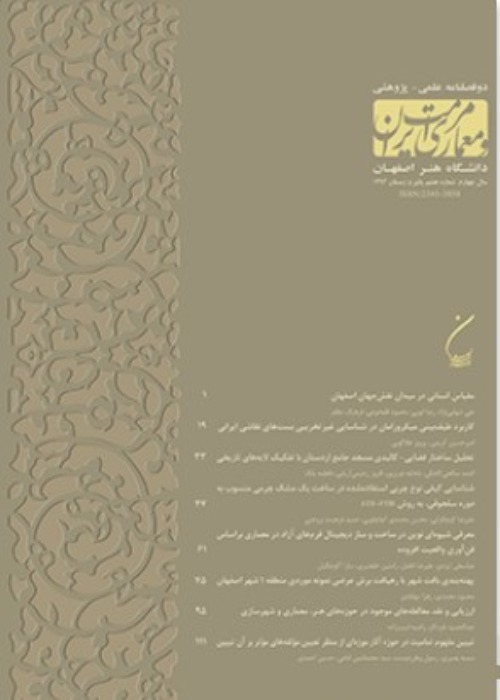The Technical and Pathological Study of Black Inks Used by Modern Calligraphers
Author(s):
Abstract:
Today, despite skilled calligraphers, low-quality inks in the market, heterogeneous ink materials, inappropriate viscosity and inks becoming matte shortly after drying, which indicates the lack of required quality, will cause damages such as distortion, discoloration and even destruction of paper to the valuable works of calligraphers. The pathological study of inks which are used today is an essential step to protect such works that are going to be a part of the future history of this land. What is investigated in this study is the technical and pathological evaluation of black ink, which is frequently used in calligraphy. The aim of this research is to determine the elements and components of black inks and the damages that will appear through time via laboratory studies (chemical and physical). The methods used in the chemical examination include: Atomic absorption spectroscopy methods, X-Ray diffraction spectroscopy, Fourier transform infrared spectroscopy and Chromatography methods. Physical examinations measure glossiness, coverage and viscosity of samples using “Glassymeter”, “Reflectometer” and “Ford Cup”. Chemical examinations indicate that inks are composed of organic and inorganic compounds; for the samples, instead of colorful material, a black pigment (Carbon black, except in one sample) along with an organic material (probably gum) is used. Physical examination of samples shows that more binding will result in more glossiness and more iron will lead to better coverage. Moreover, using heterogeneous particles, inappropriate mixing methods, incorrect preparation and processing of them lead to inappropriate viscosity of ink. In pathological sector, different aging processes on samples show that carbon black pigments prevent ink pallor. In addition, excess of iron and copper ions increases oxidation of cellulose. High levels of binder will accelerate the growth of microorganism and will also lead to an accumulation of ink on the paper and the formation of dense masses on paper, and finally the ink may bleed. On the other hand, low levels of binder will also lead to early bleeding of ink from its base.
Keywords:
Language:
Persian
Published:
Maremat & memari-e Iran, Volume:5 Issue: 9, 2015
Pages:
103 to 119
magiran.com/p1447260
دانلود و مطالعه متن این مقاله با یکی از روشهای زیر امکان پذیر است:
اشتراک شخصی
با عضویت و پرداخت آنلاین حق اشتراک یکساله به مبلغ 1,390,000ريال میتوانید 70 عنوان مطلب دانلود کنید!
اشتراک سازمانی
به کتابخانه دانشگاه یا محل کار خود پیشنهاد کنید تا اشتراک سازمانی این پایگاه را برای دسترسی نامحدود همه کاربران به متن مطالب تهیه نمایند!
توجه!
- حق عضویت دریافتی صرف حمایت از نشریات عضو و نگهداری، تکمیل و توسعه مگیران میشود.
- پرداخت حق اشتراک و دانلود مقالات اجازه بازنشر آن در سایر رسانههای چاپی و دیجیتال را به کاربر نمیدهد.
In order to view content subscription is required
Personal subscription
Subscribe magiran.com for 70 € euros via PayPal and download 70 articles during a year.
Organization subscription
Please contact us to subscribe your university or library for unlimited access!


